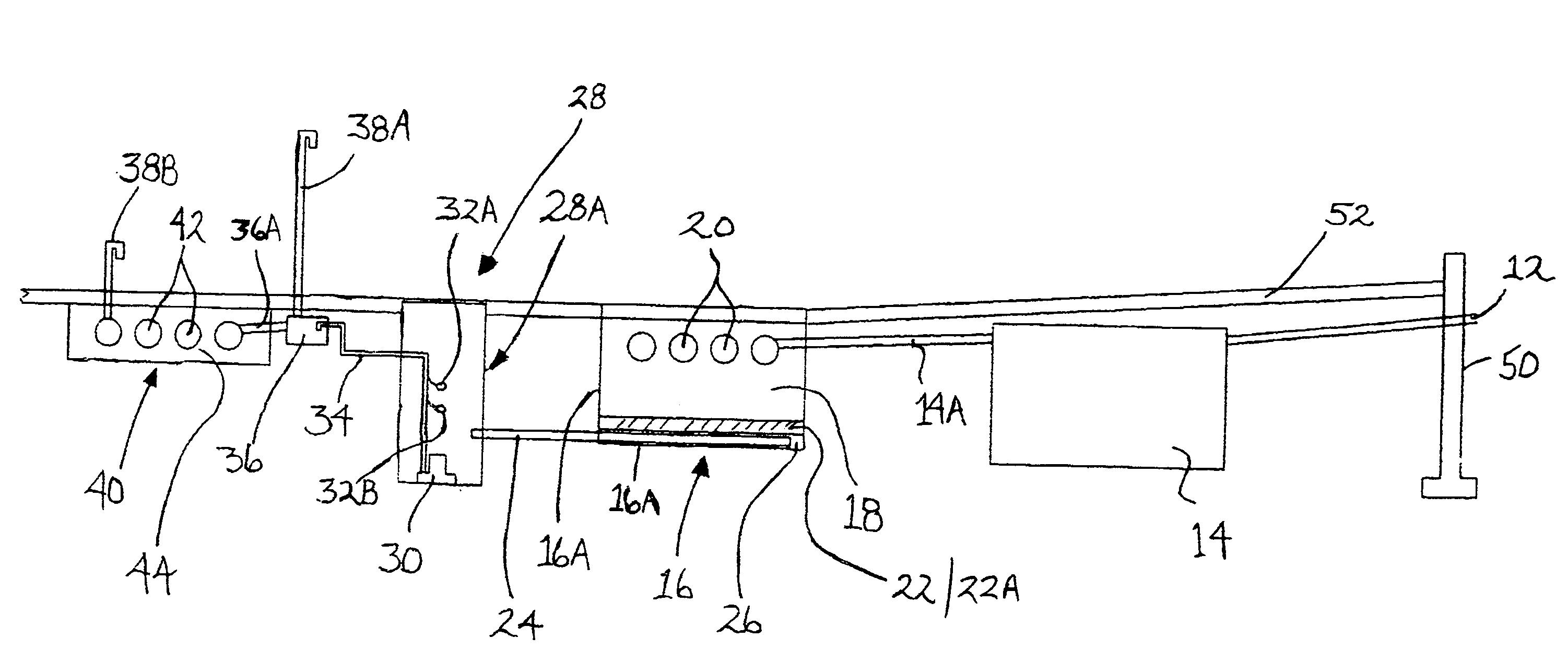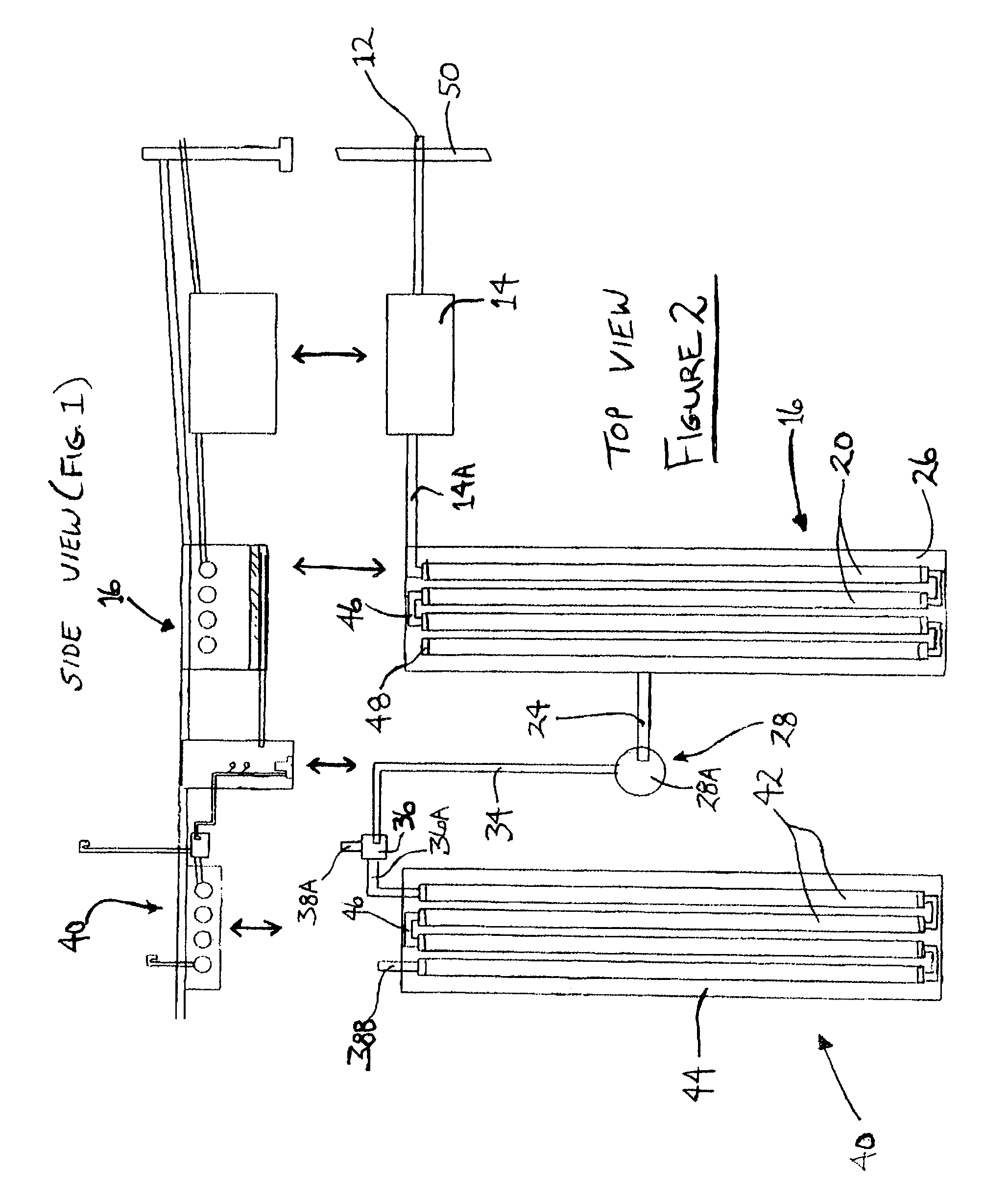Method, apparatus and system for removal of contaminants from water
a technology of water purification and water treatment, applied in water cleaning, sustainable biological treatment, biological water/sewage treatment, etc., can solve the problems of clogging or other problems, no cooling or contact at a slow enough pace to separate from the water, and now-suspended solids, so as to achieve less harmful final effluent, less volume or amount of final effluent, and less volume or volume
- Summary
- Abstract
- Description
- Claims
- Application Information
AI Technical Summary
Benefits of technology
Problems solved by technology
Method used
Image
Examples
Embodiment Construction
[0049]The following is a description of the preferred embodiment of the invention. It is clear that there may be variations in the size and the shape of the system, in the materials used in the construction and in the orientation of the various parts and devices of the system. However, the main features are consistent and the particular objectives, features and advantages are as disclosed herein.
[0050]A most basic embodiment of the invention is a system for removing nitrogen and other compounds from waste fluid such as leachate comprising: a waste introduction conduit in flow communication with a septic or other waste disposal, storage or treatment tank; an aerobic condition leaching system in flow communication, via the waste introduction conduit, with the outlet from the waste tank; a carbon source in which anaerobic / anoxic conditions can be created; means for creating and maintaining anaerobic conditions and means for exit from the carbon source material and anaerobic conditions ...
PUM
| Property | Measurement | Unit |
|---|---|---|
| height | aaaaa | aaaaa |
| length | aaaaa | aaaaa |
| length | aaaaa | aaaaa |
Abstract
Description
Claims
Application Information
 Login to View More
Login to View More - R&D
- Intellectual Property
- Life Sciences
- Materials
- Tech Scout
- Unparalleled Data Quality
- Higher Quality Content
- 60% Fewer Hallucinations
Browse by: Latest US Patents, China's latest patents, Technical Efficacy Thesaurus, Application Domain, Technology Topic, Popular Technical Reports.
© 2025 PatSnap. All rights reserved.Legal|Privacy policy|Modern Slavery Act Transparency Statement|Sitemap|About US| Contact US: help@patsnap.com



